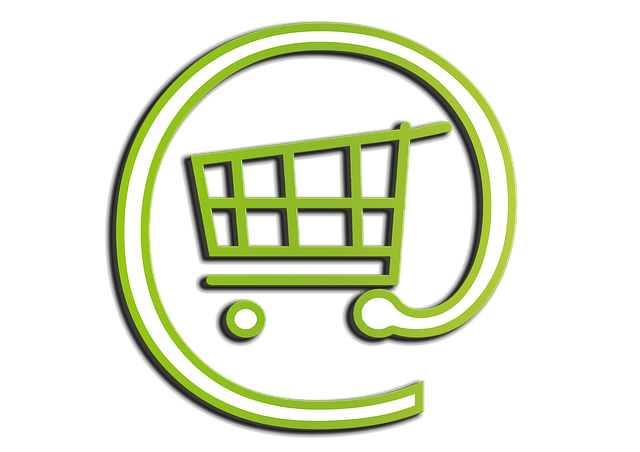Selecting a scalable chatbot platform with robust features and user-friendly interfaces is vital for business growth. Integration with CRM and e-commerce systems creates seamless customer experiences. Customization aligns brand voice and unique selling points. Chatbots automate tasks, provide 24/7 support, and offer valuable data insights. Strategic conversational flows enhance user experiences and focus human resources on complex issues. Measuring success and optimizing chatbot performance through key metrics ensures efficiency and boosts business growth.
In today’s digital era, small businesses are leveraging chatbot tools to streamline operations and enhance customer engagement. This article explores how chatbots simplify scaling, focusing on choosing the right platform for scalability, integrating with existing systems, designing efficient conversational flows, and measuring performance optimization. By implementing these strategies, businesses can leverage chatbots to meet growing demands without compromising quality.
- Choosing the Right Chatbot Platform for Scalability
- Integrating Chatbots with Existing Business Systems
- Designing Conversational Flows for Efficient Scaling
- Measuring Success and Optimizing Chatbot Performance
Choosing the Right Chatbot Platform for Scalability

When considering a chatbot for business scaling, selecting the appropriate platform is paramount. The ideal choice should offer robust features that accommodate growth while remaining user-friendly and adaptable to evolving business needs. Look for platforms with scalable architectures designed to handle increasing conversation volumes and data processing demands as your customer base expands.
Integrations with existing business systems, such as CRM and ecommerce automation (like an AI funnel), are also essential. Seamless integration ensures that chatbot interactions seamlessly feed into your overall ai workflow, providing a cohesive and efficient customer experience. Choose a platform that supports customization to tailor the chatbot’s responses and actions to match your brand voice and unique selling points.
Integrating Chatbots with Existing Business Systems

As small businesses look to scale, integrating a chatbot into their operations becomes an increasingly attractive option. Chatbots offer a seamless way to enhance customer engagement and support while streamlining various business processes. By connecting chatbots with existing systems like CRM (Customer Relationship Management) software, accounting platforms, or e-commerce solutions, these AI agents can access valuable data and provide contextually relevant interactions. For instance, a sales chatbot integrated with an ERP (Enterprise Resource Planning) system can retrieve product information, customer purchase history, and inventory levels to offer personalized recommendations.
This integration allows businesses to create a unified front-end experience for their customers, leveraging the power of AI agents to automate repetitive tasks and provide 24/7 support. Moreover, chatbots can collect and analyze data from multiple sources, offering valuable insights that help in making informed business decisions. As a result, small businesses can efficiently manage customer interactions at scale while optimizing their resources and focusing on strategic growth initiatives.
Designing Conversational Flows for Efficient Scaling

Designing Conversational Flows is a strategic process that enables small businesses to efficiently scale their operations with the help of chatbot tools. By mapping out how a customer or client might interact with an AI agent, business owners can create streamlined and logical conversations that enhance user experiences while automating repetitive tasks. These flows should consider various scenarios, including common queries, troubleshooting, and even sales funnels, ensuring that each step is intuitive and productive.
An effective conversational flow leverages AI automation agency to handle a wide range of inquiries simultaneously, freeing up human resources for more complex issues. This strategic design allows businesses to provide 24/7 support without significantly increasing overhead costs. With the help of an ai assistant, conversations can be tailored to individual users, offering personalized interactions that build stronger customer relationships and foster business growth.
Measuring Success and Optimizing Chatbot Performance

Measuring success and optimizing chatbot performance are pivotal aspects of scaling a small business using chatbot tools. Key metrics such as conversation volume, user satisfaction ratings, and response time can provide valuable insights into how effectively the chatbot is serving customers. By tracking these parameters, business owners can identify bottlenecks in chatbot workflows and make data-driven adjustments to improve efficiency.
For instance, integrating ai agents capable of learning from user interactions can enhance chatbot automation, ensuring it provides relevant and accurate responses over time. A well-optimized sales chatbot, for example, can significantly boost lead generation by quickly addressing customer inquiries, offering personalized product recommendations, and even facilitating transactions, thereby freeing up human agents to focus on more complex issues.
Chatbots have emerged as powerful tools for small businesses aiming to scale, offering efficient customer support and streamlining operations. By selecting the right platform, integrating with existing systems, designing intuitive conversational flows, and continuously measuring performance, businesses can leverage chatbots to enhance their scalability and stay competitive in today’s digital landscape. Implementing these strategies ensures a smooth transition to a more robust, responsive, and profitable business model.
